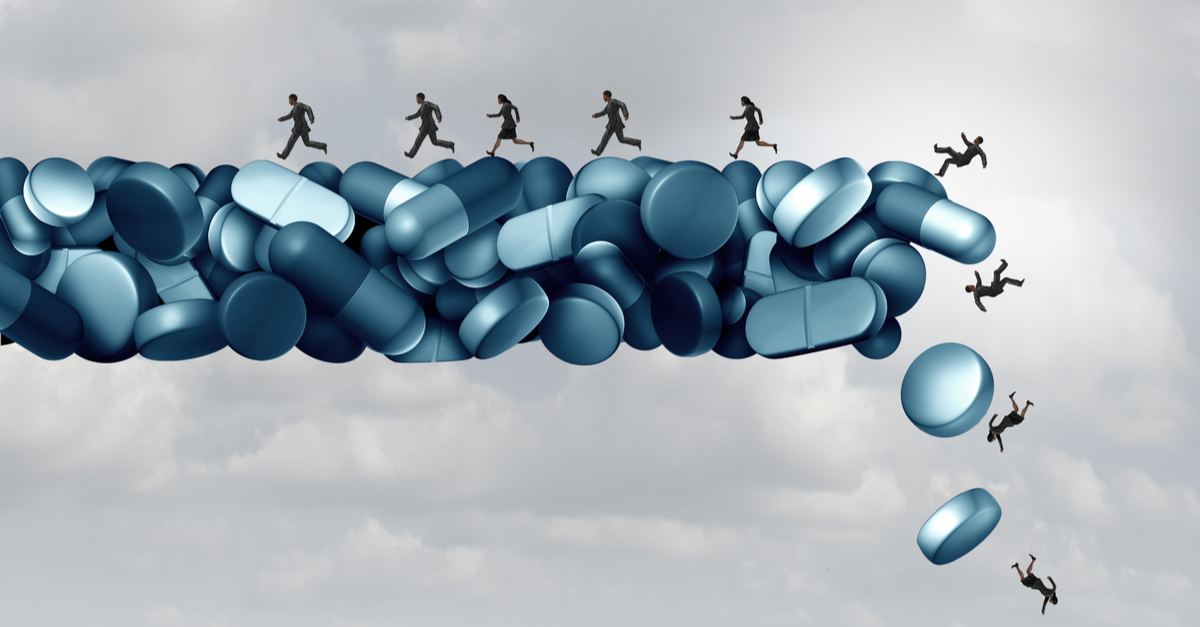This
post is part of an ongoing series examining the ways in which substance use impacts sexual behavior, and vice versa. Previous posts have covered alcohol, opioids, meth, other amphetamines, drugs that disinhibit and relax the user, and drugs that heighten arousal. In this week’s post, we examine drugs used for symptom management.
Benzodiazepines and Sedative/Hypnotics
Benzodiazepines are the most widely prescribed central nervous system drug in the United States. In high doses, these drugs act as hypnotics. In medium doses, they reduce anxiety. In low doses, they sedate and induce sleep. Common examples of these drugs include alprazolam (Xanax), temazepam (Restoril), lorazepam (Ativan), diazepam (Valium), and clonazepam (Klonopin). All of these drugs are highly addictive and require medically supervised detoxification.
Benzodiazepines impact sex mostly through their effects on sedation, lack of attention, and muscle relaxation. They suspend some aspects of limbic activity and therefore, with chronic use, they can undermine sexual responsiveness and desire. Some hypnotics used for sleep, such as zolpidem (Ambien), can cause blackouts, during which various activities, including eating, driving, and even sex, can occur without any memory.
Rather obviously, these drugs are not a good choice for sexual enhancement. However, for some substance/sex addicts, days of sleepless, dopamine and adrenaline-driven behavior inevitably result in frayed nerves, a depletion of emotional resilience, and a weakened ability to tolerate stress. So, at the end of a sex and drug run, these individuals may rely on benzodiazepines to calm themselves as their bodies and brains attempt to recover.
Erectile Dysfunction Medications
Because chronic sex addiction, pornography addiction, and paired drug and sex behaviors all create tolerance, which can degrade sexual functioning, many men turn to ED medications. Basically, paired substance/sex addictions reset patterns of arousal, and the baseline level of intensity and stimulation required to create the psychological and physiological responses that result in an erection increases dramatically. Additionally, stimulant drugs such as cocaine and methamphetamine constrict blood vessels, which in turn impairs a man’s ability to achieve and maintain an erection. Drugs such as sildenafil citrate (Viagra), tadalafil (Cialis), vardenafil hydrochloride (Levitra), and alprostadil (Caverject, MUSE: Medicated Urethral System for Erection) are commonly used by men driven by sexual desire yet unable to perform.
With paired drug use and sex, ED medications can lead to high-risk sexual behavior. In one study,[1] users combining meth and sildenafil were six and a half times more likely to report having had anal intercourse without a condom, significantly increasing the risk of transmitting HIV. The chances of acquiring other sexually transmitted infections are also increased when meth and erectile dysfunction drugs are combined.
Amazingly, there are even greater risks. Meth increases the heart rate and raises core body temperature, while erectile dysfunction drugs dilate blood vessels. The result of this pushing and pulling is a significant strain on the user’s heart, increasing the risk of both heart attack and stroke.
References
[1] Mansergh, G., Shouse, R. L., & Marks, G. (2004, March). Crystal use, Viagra use, and specific sexual risk behaviors of men who have sex with men (MSM) during a recent anal sex encounter. Oral presentation. In 2004 National STD Prevention Conference, Philadelphia. Philadelphia, USA.

